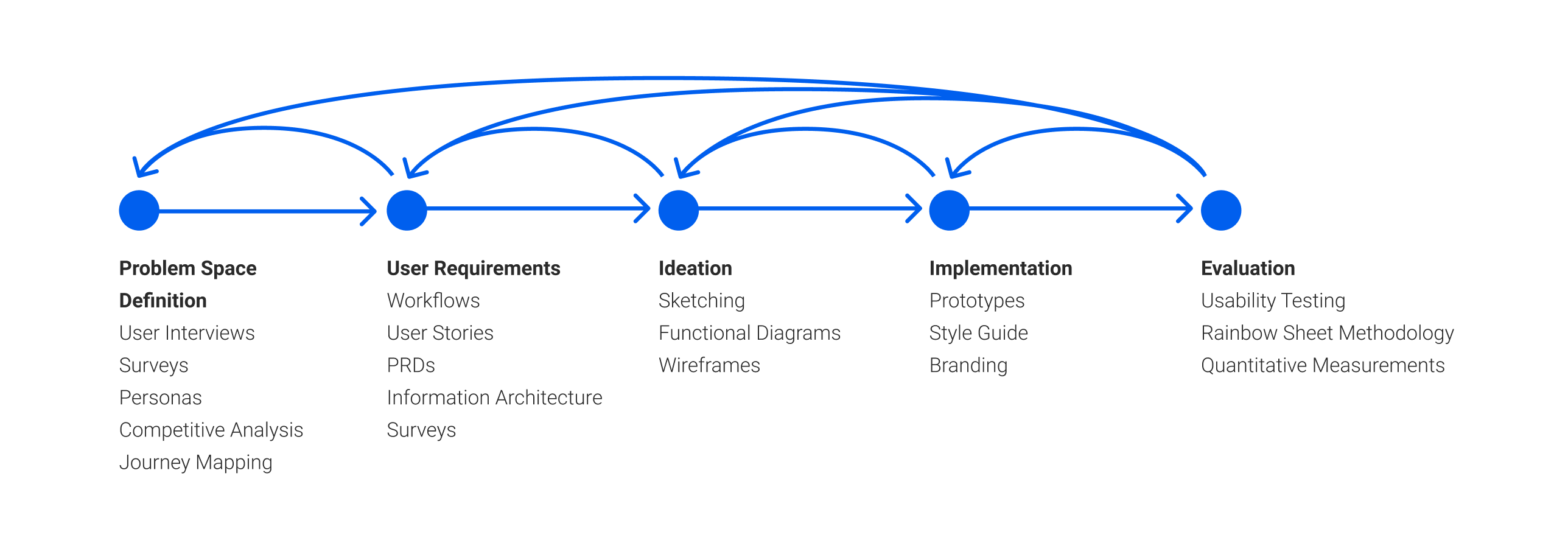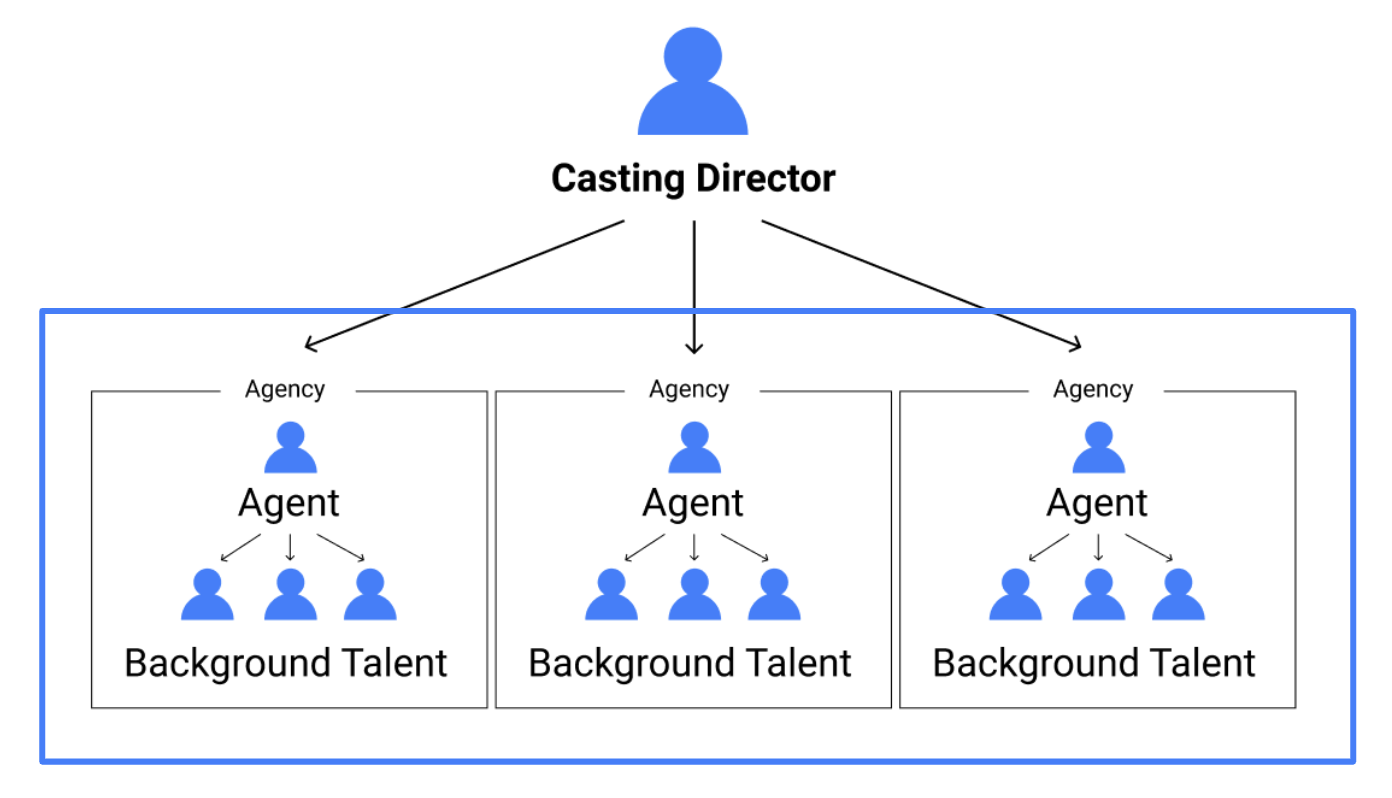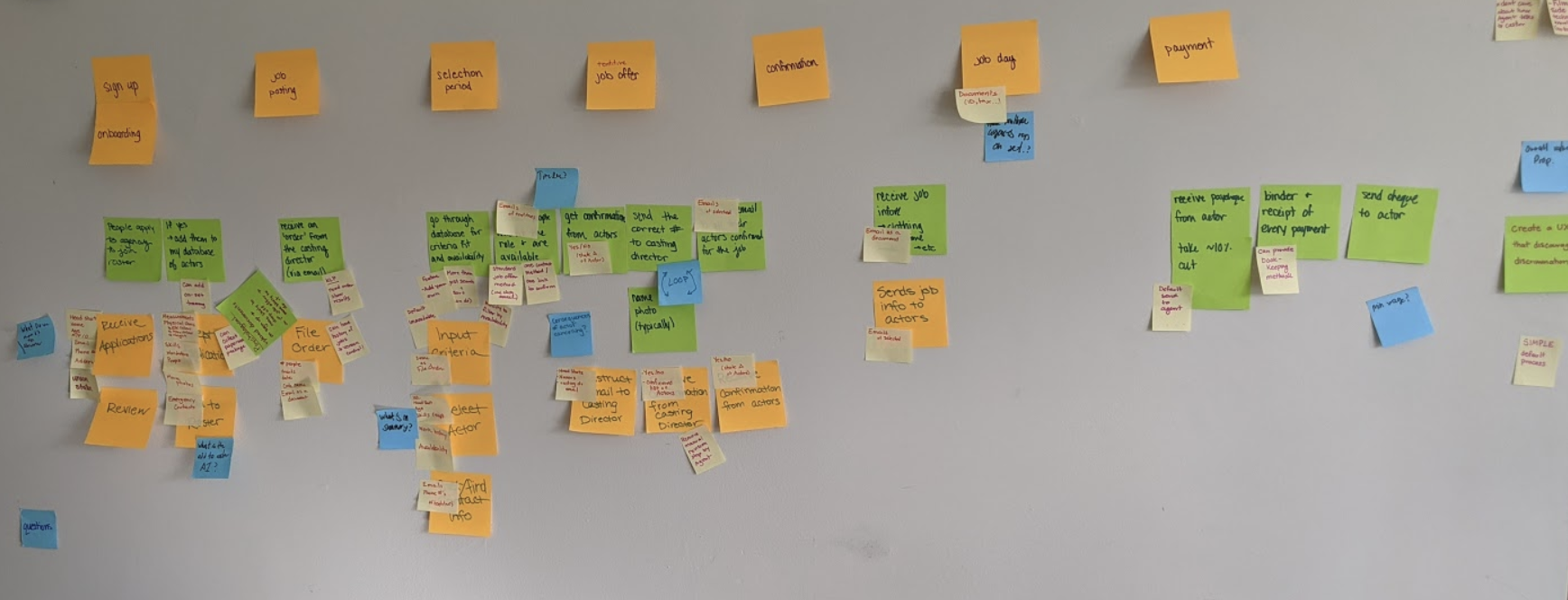University of Waterloo Capstone Project - Lead Designer - Winter 2021
CASTRA
CASTRA is a digital platform designed to optimize the casting process for background talent in the film industry. It was developed as part of my award-winning fourth-year capstone design project at the University of Waterloo. Completed over the course of 8 months, my team consisted of a total of five systems design engineering students. As the design lead, I worked on everything from user research to developing our branding. For our final product we developed a fully functional web application for talent agents and prototyped a mobile application for the background talent.

Overview
Problem Space
Almost every production, whether it’s a feature film, a TV show, or an indie short film requires background performers to be present. These background actors set the tone for scenes, establish the setting and create an ambiance for the audience. Currently, the process of casting these performers in productions is outdated and archaic. Many bothersome workarounds must be performed to complete the casting and there is little standardization within the industry.
My team’s goal was to create a digital tool which facilitates the background actor hiring process and that ultimately saves time for all parties involved.
Design Process
To complete this project we followed an iterative design process beginning with defining our problem space. We spent the first month learning and ensuring that we fully understood the current processes and film industry practices before diving into any design work. Once needs and requirements were set, we generated ideas and evaluated them along the way. Throughout the project, we conducted four separate rounds of user testing and ended up landing on a functioning solution.

Design Process
Discovery
Users
The background casting process involves casting directors, agents and the background talent that these agents represent. Casting directors send out casting orders to agents which includes criteria for roles. For example, an order could ask for 10 people, ages 18+ needed on March 28th to sit in a scene taking place in a coffee shop. Agents must then fulfill these orders by finding talent from their roster that fit this criteria. Once chosen, the selected background talent is contacted for availability and once approved by the casting director, is booked for the role.

Background Casting User Hierarchy
Primary Research
To investigate the problem space, we began by learning more about the current process through competitive analyses, surveys, and interviews with industry professionals. By mapping out each of the main journeys of each core user, we were able to identify gaps in the current process and what parts had the largest amount of pain points. The casting director journey had very little space for improvement, while the agent and background talent processes were very cumbersome and inefficient.


Journey Mapping
The main takeaways from this research were the following:
-
Finding the right talent is a lengthy process, but it doesn't have to be.Currently selecting talent for an order is done in a variety of ways from flipping through a binder of headshots to searching spreadsheets or personal databases. Additionally, talent needs to be contacted to make sure that they are available for the required dates.
-
There is no single form of communication between agents and their talent.Background talent receive everything from emails to text messages to phone calls which becomes frustrating and difficult to keep track of.
Design
User Flow
With research findings in mind, the team and I decided to focus on improving the talent and agent journeys throughout the casting process. Through affinity mappings, we developed an ideal flow between the two and identified gaps that we could automate and optimize.

User Flow
Information Architecture
I then created an information architecture diagram that lived as the source of truth for both the design and software teams. It helped us figure out what information would live where and would continue to evolve throughout the length of the project.

Information Architecture
Ideation
Sketches and wireframes were developed to explore alternatives for each part of the ‘happy path’. These were validated and tested with users to ensure that typical tasks were intuitive and easy to accomplish.


Wireframes
Solution
The final solution was CASTRA, a platform including a web tool for agents to help manage and fulfill their casting orders and a mobile app for background performers to keep track of their upcoming work.

CASTRA Solution
Key Features
Attributes
Agents initiate the casting process by inputting received orders from casting directors into the platform. During this task they need to identify roles with specific characteristics that performers would need to play. This task had to be scalable, easy to use and implemented in multiple places across the platform to further allow for filtering of talent. By leveraging users' existing mental models from previous experiences browsing online, a simple two-step process was developed.

Attributes Tool
Talent Selection
The main benefits of CASTRA come out during the talent selection process. Using the defined roles and attributes that agents input when creating an order, CASTRA automatically presents agents with suitable and available talent who could be instantly contacted for the specified roles. These selections could also be easily modified and changed using the right-side toolbar. This process eliminates any need for mass emailing and long chained communication threads.

Selecting Talent
Progress Bar
The casting process is often quite similar with each new order, however the difficult part is simultaneously keeping track of the progress of many orders at the same time. After the first iteration of designs it was clear that people didn’t know what step to take next. Therefore, a progress bar was developed and implemented that would quickly communicate to agents what step they were on for an order and what they would need to do next.


Progress Bar States
Talent Onboarding
Signing up with an agency is one of the most tedious processes that background performers must go through to be employed. It requires inputting large amounts of personal information and is often done using a long form that is not user friendly. With the CASTRA mobile app, it was my goal to improve and speed up this flow by creating a delightful experience while educating talent about why information is collected and how it will be used.

Talent Onboarding Process
Validation
Extensive usability testing was conducted multiple times throughout the design process to ensure that the product was on the right track and that there were no large gaps that we were missing. The final round of testing included over 15 participants and CASTRA was evaluated to be a strong and successful solution. Both the agent and talent applications proved to be learnable, efficient, and easy to use. Industry professionals were impressed with the tools’ management and communication capabilities and background actors - with the cleanliness and efficacy.
Reflection
Learnings
This was the longest project I had ever worked on and therefore the most rewarding. Building a product from the ground up in a niche space required a lot of time understanding the problem space and narrowing down the scope. This process helped identify major market gaps and made the team experts in the domain. I further learned the importance of evaluation and continuously empathizing and speaking with industry professionals at each step of the design process. Receiving feedback and insights from a wide range of users resulted in a product that fully catered to their needs and desires.